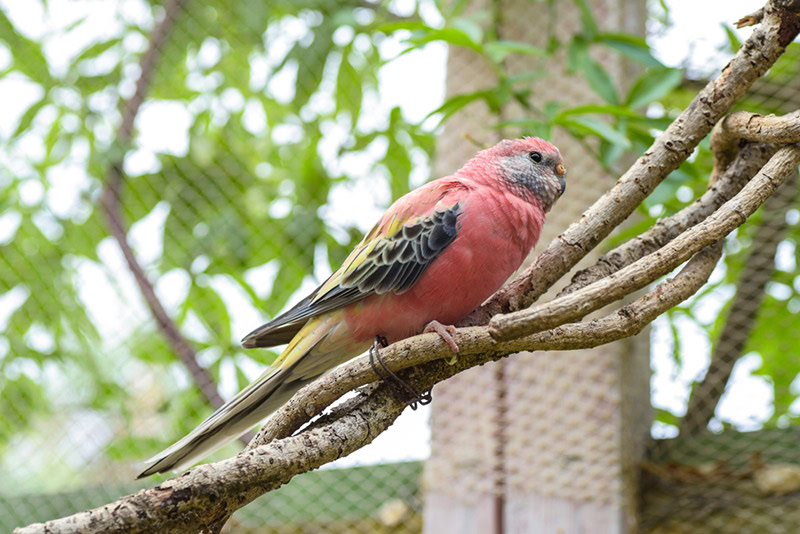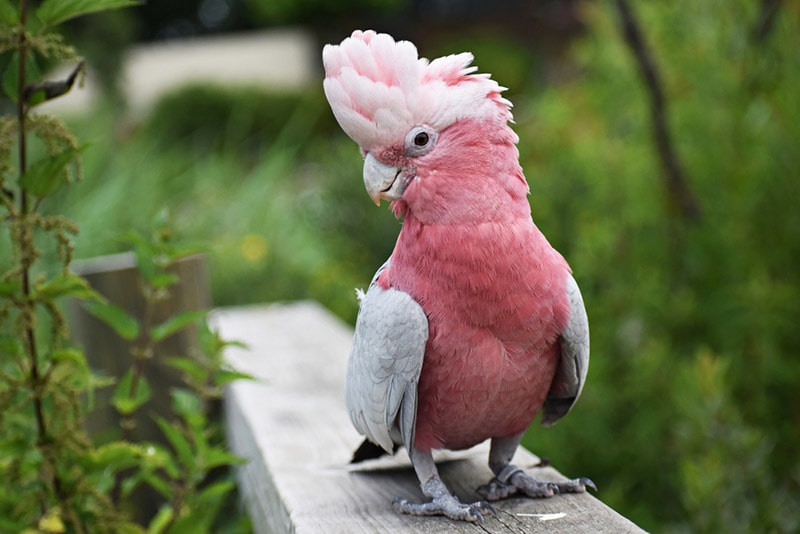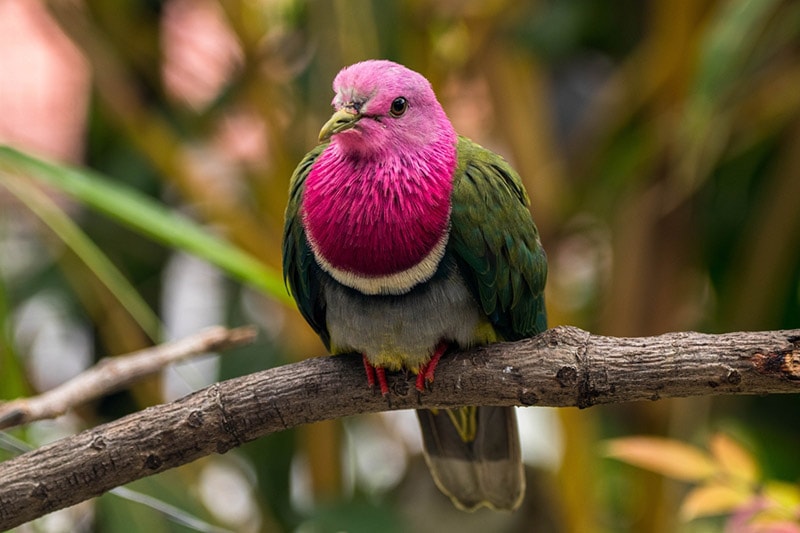Are you ready to dive into the world of pink bird pets? Let's be real, who wouldn't want a vibrant, eye-catching feathered friend to brighten up their day? Whether you're a seasoned bird enthusiast or just starting your pet adventure, pink bird pets offer a unique blend of beauty, charm, and personality. But before you grab the nearest pink bird, there's a lot you need to know. Stick around, because we've got all the deets covered!
Choosing a pink bird pet is more than just picking a pretty face. It’s about understanding their needs, behaviors, and quirks. These feathered cuties aren’t just decorations for your living room; they’re living beings that require love, care, and attention. From their dietary preferences to their social habits, there’s a ton to learn. So, let’s make sure you’re fully prepared for this colorful journey!
Now, buckle up because we’re diving deep into the world of pink bird pets. This guide isn’t just another blog post—it’s a comprehensive roadmap to help you become the best bird parent possible. Let’s get started, shall we?
Read also:Who Is Lisa Evers Married To Unveiling Her Love Story And Journey
Why Pink Bird Pets Are Taking the World by Storm
Pink bird pets have been turning heads for years, and it’s not hard to see why. Their striking plumage and playful personalities make them stand out in the pet world. But what exactly makes these birds so special? Here are a few reasons why pink bird pets are becoming everyone’s favorite:
- They’re visually stunning, with vibrant pink feathers that catch the eye.
- Most pink bird species are highly social, making them great companions for families.
- They’re intelligent creatures that can learn tricks, mimic sounds, and even bond deeply with their owners.
- Pink bird pets often have long lifespans, meaning they can be lifelong companions if cared for properly.
But let’s not forget, owning a pink bird pet is a big responsibility. It’s not all rainbows and lollipops. These birds need proper care, a balanced diet, and plenty of mental stimulation. If you’re up for the challenge, though, the rewards are worth it!
Understanding the Different Types of Pink Bird Pets
Not all pink birds are created equal. Depending on your lifestyle and preferences, there are several species to choose from. Let’s break down some of the most popular pink bird pets:
Eclectus Parrot: Known for their striking green-and-pink plumage, Eclectus parrots are intelligent and social. They thrive in environments where they get plenty of attention and mental stimulation.
Rose-Breasted Cockatoo: Also called Galah Cockatoos, these birds are famous for their pink chests and gray wings. They’re affectionate and playful, making them great family pets.
Pink Robin: While not as common as parrots, pink robins are a unique choice for bird enthusiasts. They’re smaller in size but just as charming.
Read also:Who Is Lil Uzi Dating The Untold Story Behind His Love Life
Each species has its own set of needs, so it’s important to research thoroughly before making a decision. Remember, the right bird for you is the one that fits your lifestyle and commitment level.
What You Need to Know Before Bringing a Pink Bird Home
Bringing a pink bird pet into your home is exciting, but it’s also a big commitment. Here’s what you need to consider before taking the plunge:
Space and Environment
Pink birds need plenty of space to move around and spread their wings. A cramped cage will not only limit their physical activity but can also lead to behavioral issues. Make sure you have a large enough cage that allows your bird to stretch and play comfortably.
In addition to the cage, you’ll need to create a bird-friendly environment. This includes providing perches, toys, and other enrichment items to keep your bird entertained. Think of it as setting up a mini playground for your feathered friend!
Diet and Nutrition
Pink bird pets have specific dietary needs that must be met to keep them healthy. While seeds are a popular choice, they shouldn’t be the only thing on the menu. A balanced diet should include fresh fruits, vegetables, and high-quality bird pellets.
Here’s a quick list of foods your pink bird might enjoy:
- Fresh fruits like apples, berries, and mangoes
- Vegetables such as carrots, spinach, and bell peppers
- Calcium-rich foods like cuttlebone or mineral blocks
Always consult with an avian veterinarian to ensure your bird’s diet is tailored to their specific needs.
The Importance of Socialization and Bonding
Pink bird pets are highly social creatures that thrive on interaction. Neglecting their social needs can lead to stress, boredom, and even aggression. Here’s how you can build a strong bond with your feathered friend:
Spending Quality Time Together
Set aside time each day to interact with your pink bird. This could be as simple as talking to them, playing with their toys, or teaching them new tricks. The key is consistency and patience. Over time, your bird will learn to trust you and form a deep connection.
Training and Positive Reinforcement
Training is an excellent way to bond with your pink bird pet while also teaching them valuable skills. Use positive reinforcement techniques, such as rewarding good behavior with treats or praise. This approach not only strengthens your relationship but also helps prevent bad habits from forming.
Common Health Issues in Pink Bird Pets
Even with the best care, pink bird pets can sometimes fall ill. Being aware of common health issues can help you catch problems early and ensure your bird gets the treatment they need. Here are a few conditions to watch out for:
- Feather plucking due to stress or boredom
- Respiratory infections caused by poor air quality
- Nutritional deficiencies leading to weakened immune systems
Regular check-ups with an avian veterinarian are crucial for maintaining your bird’s health. They can spot potential issues before they become serious and provide guidance on prevention and treatment.
Signs Your Pink Bird Might Be Unwell
It’s important to know the warning signs of illness in pink bird pets. Some common indicators include:
- Fluffed-up feathers
- Loss of appetite
- Changes in droppings
- Excessive sleeping or lethargy
If you notice any of these symptoms, don’t hesitate to contact your vet. Early intervention can make a huge difference in your bird’s recovery.
Creating a Happy and Stimulating Environment
A happy pink bird pet is a healthy pink bird pet. Providing a stimulating environment is essential for their mental and emotional well-being. Here’s how you can keep your bird entertained:
Interactive Toys and Games
Toys are a great way to keep your pink bird engaged and mentally sharp. Look for toys that encourage problem-solving, such as puzzle feeders or foraging toys. You can also try games like hide-and-seek with treats to keep them entertained.
Music and Sounds
Many pink bird pets enjoy listening to music or sounds from nature. Playing soft melodies or recordings of bird calls can be soothing and enriching for them. Just be mindful of the volume and avoid anything too loud or jarring.
Cost Considerations for Owning a Pink Bird Pet
Owning a pink bird pet comes with certain financial responsibilities. From the initial purchase to ongoing care, it’s important to budget accordingly. Here’s a breakdown of potential costs:
- Initial purchase price: $500-$2,000 depending on the species
- Cage and accessories: $200-$500
- Food and treats: $50-$100 per month
- Vet visits: $100-$300 annually
While these numbers might seem daunting, remember that the joy and companionship a pink bird pet brings are priceless. Just make sure you’re prepared for the financial commitment before bringing one home.
Long-Term Investment
Pink bird pets often have long lifespans, with some species living 20-50 years or more. This means you’ll need to plan for their care over the long term. Consider factors like future vet bills, dietary changes, and potential rehoming if necessary.
Building a Community Around Your Pink Bird Pet
Being part of a community can be incredibly beneficial when it comes to owning a pink bird pet. Connecting with other bird enthusiasts can provide support, advice, and even friendship. Here’s how you can get involved:
Joining Online Forums and Social Media Groups
There are countless online communities dedicated to bird lovers. These platforms are great for sharing experiences, asking questions, and learning from others. You might even find local meetups or events to attend with your feathered friend.
Attending Bird Shows and Exhibitions
Bird shows and exhibitions are fantastic opportunities to see different species, learn about breeding, and connect with fellow bird enthusiasts. They’re also a great way to showcase your own pink bird pet and share your love for these amazing creatures.
Final Thoughts: Is a Pink Bird Pet Right for You?
Owning a pink bird pet is a rewarding experience that requires time, effort, and dedication. From their vibrant plumage to their playful personalities, these birds bring so much joy and color into our lives. But remember, they’re not just pets—they’re family members who deserve love, care, and respect.
Before making a decision, take the time to research and reflect on whether a pink bird pet fits your lifestyle. If you’re ready for the commitment, there’s no doubt you’ll form a bond that lasts a lifetime.
So, what are you waiting for? Dive into the world of pink bird pets and discover the magic they bring. And don’t forget to share your experiences with us in the comments below. Let’s keep the conversation going!
Table of Contents
- Why Pink Bird Pets Are Taking the World by Storm
- Understanding the Different Types of Pink Bird Pets
- What You Need to Know Before Bringing a Pink Bird Home
- The Importance of Socialization and Bonding
- Common Health Issues in Pink Bird Pets
- Creating a Happy and Stimulating Environment
- Cost Considerations for Owning a Pink Bird Pet
- Building a Community Around Your Pink Bird Pet
- Final Thoughts: Is a Pink Bird Pet Right for You?


